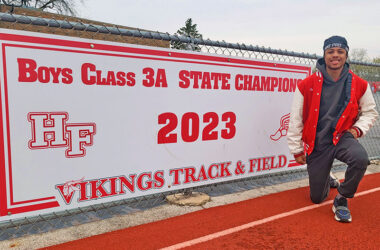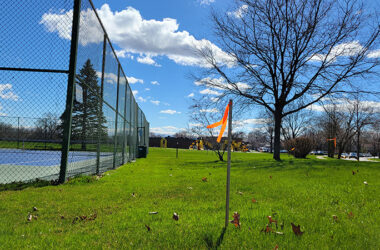(Source: Cook County Department of Public Health)
The color-coded map of COVID-19 case rates in suburban Cook County provides a snapshot of how the virus is distributed in the region. Early data show the weight of that distribution falls heavily on the South Suburbs and on people of color.
The map displaying the rates of infection provided by the Cook County Department of Public Health (CCDPH) shows the darkest colors, indicating the highest proportion of cases, congregate almost entirely in southeast half of the South Suburbs.
The map includes suburban communities under the jurisdiction of the CCDPH, so it excludes data from Chicago, Evanston, Oak Park, Skokie and Stickney Township.
CCDPH Senior Medical Officer Dr. Kiran Joshi said recently that African Americans are getting ill from COVID-19 at a rate more than three times that of whites and dying at a rate four times higher. COVID-19 rates in the south suburbs, which are predominantly black, are twice as high as in the north suburbs, which are predominantly white.
The data posted on Friday, April 17, show that most of the communities east of Orland Park and Tinley Park to Dixmoor have comparably high rates. The lowest rate, 140 per 100,000 people, was in Orland Hills.
The remainder of the South Suburbs section of the map shows a cluster of high rate communities. Park Forest has the highest rate of the entire CCDPH suburban jurisdiction, with 959 cases per 100,000 people.
Matteson had a rate of 731 per 100,000, while Robbins, South Holland and Steger were all higher than 600 per 100,000. Six communities have rates of more than 500 per 100,000.
Homewood, with 90 cases, had a rate of 466 per 100,000 people and Flossmoor, with 45 cases, had a rate of 475. Homewood has recorded 8 deaths. Flossmoor’s COVID-19 related death count is listed as 4.
The northern tier of the map shows fewer high-rate communities, with only three at 500 or more per 100,000 people—Lincolnwood, Des Plaines and Kennilworth. As of Friday, Des Plaines had the highest rate in the northern suburbs, with 576 cases per 100,000 people.
The middle section, a narrow vertical strip just outside the western edge of Chicago from Park Ridge to Palos Heights, shows six communities with a rate of more than 400 cases per 100,000. Bellwood was the highest, with 760.
Cook County Sixth District Commissioner Donna Miller, a healthcare professional herself who represents south suburban communities from Dolton to Flossmoor, said several factors are contributing to the rates in some parts of the South Suburbs.
One is the presence of nursing homes in communities that present with higher rates. Residential facilities for older people have been “hot spots” for the virus across the country.
Two characteristics make those facilities vulnerable to COVID-19: close living quarters, which aids in the virus’ spread, and an elderly population who commonly have existing health problems, making them more susceptible to serious complications from the disease.
Another related factor for the South Suburbs’ higher rate is a generally greater concentration of people suffering from chronic health conditions that make them vulnerable to the virus, Miller said.
She said maps showing high rates of COVID-19 cases and deaths overlap considerably with maps created prior to the pandemic that identify locations with greater concentrations of people who have chronic health conditions such as asthma, diabetes, hypertension and other cardiovascular disorders.
Miller confirmed that race is another factor contributing to the higher rate of COVID-19 infection and death. COVID-19 is much more prevalent among African American people than those in other racial groups. She attributes that trend to the fact that African Americans as a group are more likely to suffer from the chronic conditions, like asthma, hypertension and obesity, that increase the morbidity of COVID-19.
“These are all significant risk factors,” she said, noting that more needs to be done to address inequities within the healthcare system driving these numbers. “This is a wake-up call.”
In Homewood, which is about half Caucasian and one-third African American, the incidence of COVID-19 infection shows a nearly reverse ratio, with blacks representing half the cases, and whites about 25 percent.
African Americans make up about 44 percent of Flossmoor’s population, but represent 67 percent of the cases in that town, while whites represent about 16 percent of cases and about 33 percent of the population.
Concern for the racial disparities in COVID-19 infection has also been addressed recently at the state level.
On April 4, Illinois Department of Public Health Director Dr. Ngozi Ezike confirmed Miller’s take on the reasons African Americans are being hit hardest by the virus.
“We already know before COVID was established that the health outcomes for various communities are already different,” she said during the daily COVID-19 briefing. “If you know those disparities exist in terms of health outcomes you can imagine that overlaying a new disease is only going to exacerbate the inequities that already exist.”
The next day, Gov. J.B. Pritzker said the state was trying to address the problem by getting more healthcare resources into African American communities. He cited the state’s decision to re-open MetroSouth Medical Center in Blue Island as one example. He subsequently noted that a new drive-through testing site would be opened in the South Suburbs.
That site, located in Markham at the motor vehicle emissions testing facility, opened on Tuesday.
“We already started out with an unequal system of healthcare, then it gets massively exacerbated when you bring on something like COVID-19,” Pritzker said. “I’m deeply concerned about this. It’s hard to make up for decades, maybe centuries, of inequality of the application of healthcare.”
At a virtual town hall session hosted Thursday by Miller, panelists Pamela Garmon Johnson, vice president of health equity impact for the American Heart Association, and
Dr. Aletha Maybank, chief equity officer for the American Medical Association, explored the underlying health conditions that make African Americans more vulnerable to COVID-19 and also the underlying social and economic conditions that contribute to the health problems.
Maybank pointed to Chicago Mayor Lori Lightfoot’s recent announcement that the city would establish a “racial equity rapid response team” made up of health care providers, public health clinicians and stakeholders in community.
“I thought that was a really explicit solution,” Maybank said. “It’s calling out that we have to do something. We have to do it through the lens of racial equity.”




